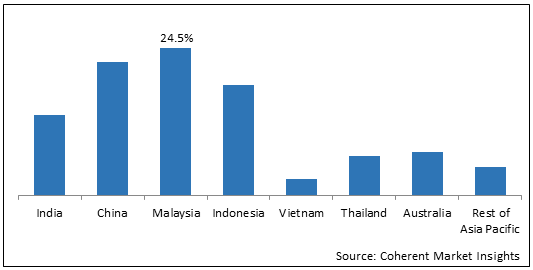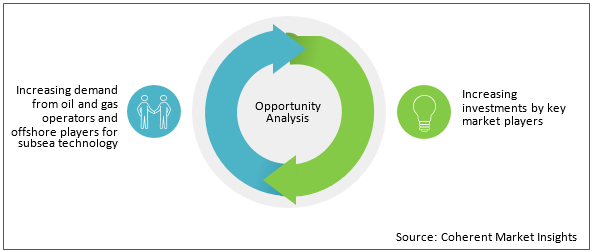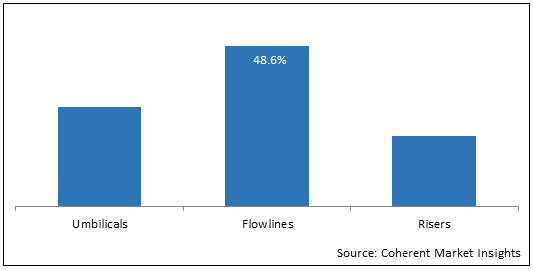SURF (subsea umbilicals, risers, and flowlines) helps connect the surface systems and subsea production. In line with this objective, SURF can be divided into two parts: umbilicals, and risers and flowlines. Newer fields as the production of oil & gas are located in deeper waters as compared to the mature fields. SURF is primarily employed in deep offshore fields.
The Asia Pacific SURF market is expected to surpass US$ 19.47 billion by the end of 2028 and exhibit a CAGR of 12.5% during the forecast period (2021 to 2028).
Drivers
Increasing demand for oil and natural gas in emerging economies is driving the SURF (subsea umbilicals, risers, and flowlines) market growth in the Asia Pacific region. Increasing subsea installation has also positively impacted the SURF market. According to the International Energy Agency (IEA), in 2018, Asia Pacific’s oil demand was increased by 34.8 billion barrels/day from 34 billion barrels/day in 2017.
Increasing oil and gas exploration and production activity in deep and ultra-deep water depths has boosted the growth of the Asia Pacific SURF (subsea umbilicals, risers, and flowlines) market. According to the IEA, the spending for offshore exploration and production amounted to US$ 343 billion in 2014, an increase of 6% from 2013. Furthermore, increasing oil and gas exploration, production activities, projects, and initiatives of major players to build advanced technologies have surged the SURF market in APAC. For instance, in October 2018, Aker Solutions, an an engineering company based in Oslo, received orders from the China National Offshore Oil Corporation (CNOOC) to provide the subsea production system and umbilicals for Lingshui 17-2 gas field.
Among countries, Malaysia held the dominant position in the Asia Pacific SURF market in 2020, accounting for 24.5% market revenue share, followed by China.
Figure 1. Asia Pacific SURF Market Revenue Share (%), By Country, 2020

To learn more about this report, Download Free Sample
Market Restraints
High capital investment and flexible oil prices is anticipated to hamper the APAC SURF market over the forecast period. Oil and gas from subsea system is transported to the host by flowlines and umbilicals control well and production equipment, which are very expensive. Divers and remotely operated vehicles are used to perform many deep-water work functions on subsea installation and maintenance.
Market Trends
Increasing investments by major players and augmenting oil and gas exploration and production activities in Asia Pacific are the current SURF market trends in the region. For instance, in 2018, India’s Oil and Natural Gas Corp. (ONGC), an Energy Company, awarded its largest single subsea contract to a consortium of McDermott International, Inc., Baker Hughes, a GE Company (BHGE), and L&T Hydrocarbon Engineering (LTHE), a subsidiary of Larsen & Toubro. These companies would provide ONGC with services and subsea equipment for its largest deep-water project. Moreover, ONGC contract calls for installing subsea umbilicals, risers, and flowlines (SURF) at water depths that is ranging from 984 feet to 10,500 feet.
Asia Pacific SURF Market Report Coverage
| Report Coverage | Details | ||
|---|---|---|---|
| Base Year: | 2020 | Market Size in 2020: | US$ 6.22 Bn |
| Historical Data for: | 2017 and 2020 | Forecast Period: | 2021 to 2028 |
| Forecast Period 2021 to 2028 CAGR: | 12.5% | 2028 Value Projection: | US$ 19.47 Bn |
| Geographies covered: |
|
||
| Segments covered: |
|
||
| Companies covered: |
Aker Solutions ASA, TechnipFMC plc, Prysmian Group, Vallourec S.A., JDR Cable Systems (Holdings) Ltd., Oceaneering International, Inc., Subsea 7 S.A., Nexans Norway AS, Saipem S.p.A., McDermott International, Inc., DeepOcean Group Holding BV, Ocean Installer AS, Actuant Corporation, and Airborne Oil & Gas B.V |
||
| Growth Drivers: |
|
||
| Restraints & Challenges: |
|
||
Uncover macros and micros vetted on 75+ parameters: Get instant access to report
Figure 2. Asia Pacific SURF Market – Opportunity Analysis

To learn more about this report, Download Free Sample
On the basis of product type, in 2020, the flowlines segment accounted for 48.6% revenue share. Subsea flowlines are the subsea pipelines used to connect a subsea wellhead with a manifold or the surface facility. Subsea flowlines carry oil and gas from the wellhead to the riser base. This has fueled the flowlines segment of APAC SURF market.
Figure 3. Asia Pacific SURF Market Revenue Share (%), By Product Type, 2020

To learn more about this report, Download Free Sample
Asia Pacific SURF Market - Impact of Coronavirus (COVID-19) Pandemic
Due to the extensive spread of the coronavirus in APAC in 2020, the energy industry faced a negative impact. Due to the rising number of deepwater and ultra-deepwater oil and gas projects in a few South-eastern Asian countries and China, the APAC region will account for the highest growth during the forecast period. The emergence of next-generation automated drilling rigs has been a driving factor influencing the growth of SURF market in APAC. Other market drivers include declining E&P cost of deepwater and ultra-deepwater oil and gas projects and the rise in new exploration policies in APAC.
Competitive Section
Key players operating in the Asia Pacific SURF market include Aker Solutions ASA, TechnipFMC plc, Prysmian Group, Vallourec S.A., JDR Cable Systems (Holdings) Ltd., Oceaneering International, Inc., Subsea 7 S.A., Nexans Norway AS, Saipem S.p.A., McDermott International, Inc., DeepOcean Group Holding BV, Ocean Installer AS, Actuant Corporation, and Airborne Oil & Gas B.V.
Share
Share
Missing comfort of reading report in your local language? Find your preferred language :
Transform your Strategy with Exclusive Trending Reports :
Frequently Asked Questions
Select a License Type
Joining thousands of companies around the world committed to making the Excellent Business Solutions.
View All Our Clients